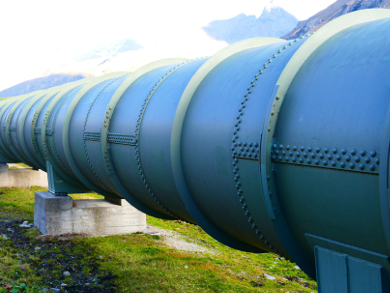X70 steel, which contains less than 2 % total of carbon, nitrogen, manganese, and various other transition metals, is often used for buried pipelines that transport water, oil, and gas. These pipelines commonly use both coatings and cathodic protection to stave off corrosion; however, coatings can be damaged or can separate from the metal during installation.
Chuan He and colleagues, Liaoning Shihua University, Fushun, China, studied sulfate-reducing bacteria in an environment that simulated groundwater seepage into the gap between a damaged coating and an X70 steel pipe. These anaerobic bacteria metabolize organic material and sulfate ions from the environment, and they release hydrogen sulfide and a hydrogenase enzyme.
The bacteria deposited black, sulfur-containing biofilms onto the steel surfaces. This induced localized corrosion that altered the electrical conductivity and current density in the immediate vicinity, providing potential sites for stress crack nucleation. The open-circuit potential of the steel decreased (increasing the potential difference within the crevice), and the hydrogenase increased the pH of the solution.
- Effects of sulphate-reducing bacteria on crevice corrosion in X70 pipeline steel under disbonded coatings,
Xu Chen, Guanfu Wang, Fengjiao Gao, Yanliang Wang, Chuan He,
Corros. Sci. 2015, 101, 1–11.
DOI: 10.1016/j.corsci.2015.06.015




